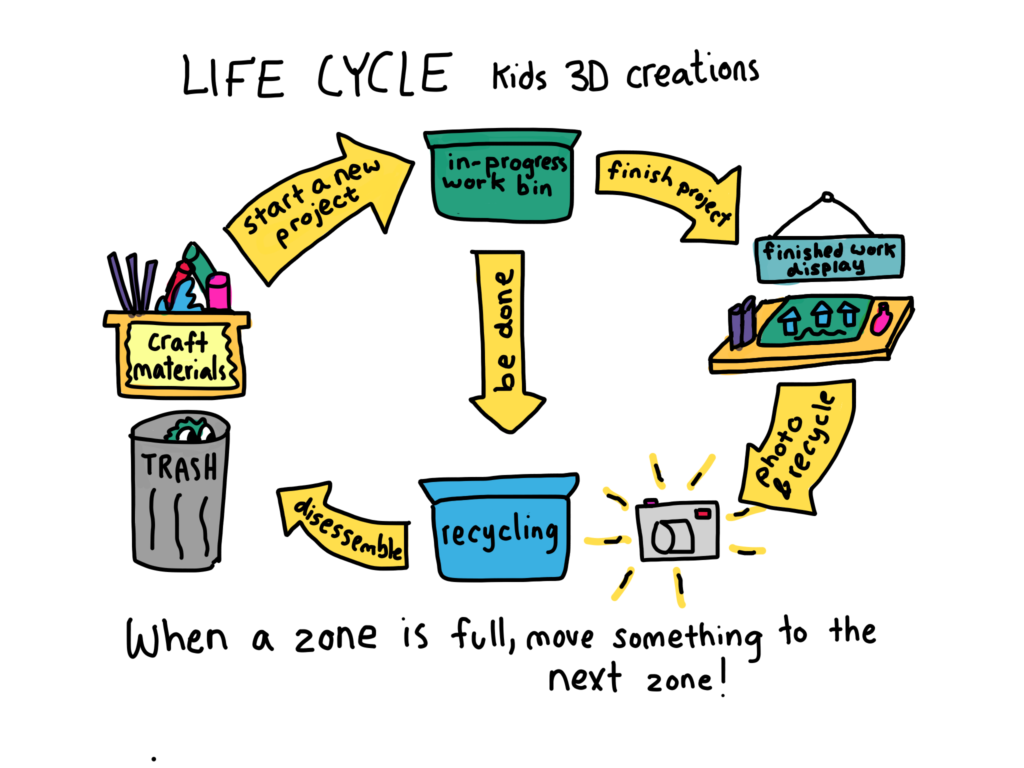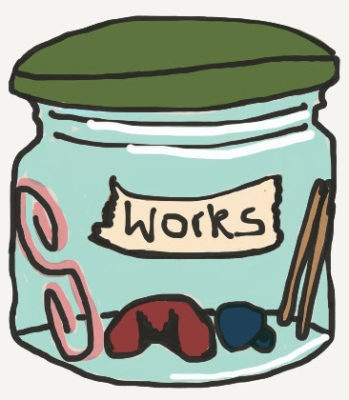Thus far I’ve always demonstrated organizational strategies by static pictures of shelves, showing how a particular set of items is best organized. Similarly, in design shows the focus is on getting rid of some things, and organizing what’s left. The problem with all this is that the set of stuff we have is always changing. It’s great to have a place for each thing and everything in its place, but what do we do when we get a new thing? A truly sustainable organizational system has to account for inevitable change, otherwise our shelves get more and more full until there’s no organization anymore at all. If you are a crafter or you have kids at home that create a lot of work, then this problem arises extremely fast. New projects are always in-progress or being completed. Even if no one is crafting, if you’re a parent you know children are constantly changing and with that comes new books, new toys, new materials, new clothes! With all of this change, organizing the material you currently have in your home will work no longer than your child stays in their current phase!
I recommend you start any organization project by splitting up the organizing into categories of items and then coming up with a life cycle for each item category. Here is an example life cycle for organizing the work of a kid who likes to make a lot of 3D creations! If you really create these four zones (raw materials, in-progress work, finished work display, and recycling), then it’s really easy to move stuff along when zones get full, and you will always have an organized system!

What categories of items do you have? How do they come into your home? How do they leave your home? I’m always happy to draw you a flow chart if it helps!

I like this concept for managing our creations. The trouble I run into is that my cycle isn’t a closed loop. Let’s say I have three types of paint in Craft Materials. And then I need to add a few more colors. I don’t want to get rid of the first ones, but now what to do with the new ones. Any thoughts?
Great question, Lynn. Perhaps you might still think of the life cycle of your materials by creating at least two distinct storage areas: one for materials you are actively using and loving, and one for materials you are considering donating. When you run out of space for paints, you move something else (maybe even a whole box of things) into the donation area. The trick would be to donate items from your donation area just as frequently as you acquire new materials.